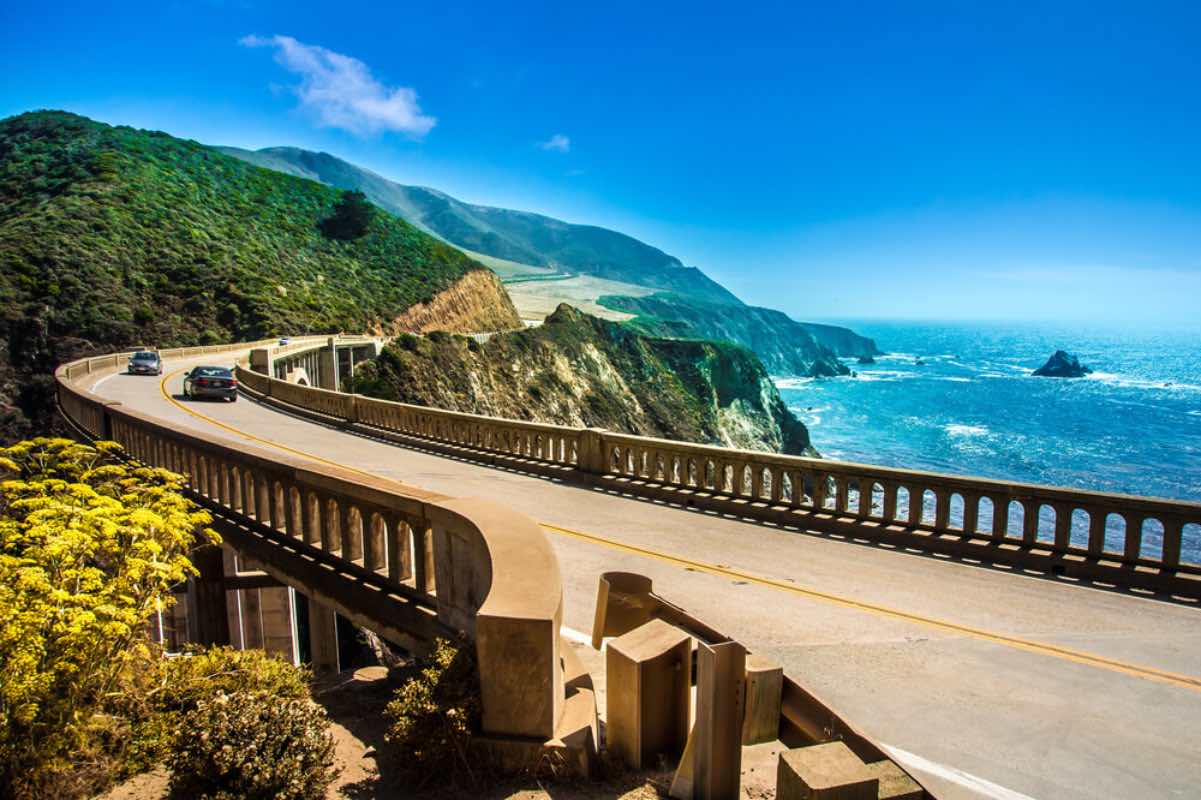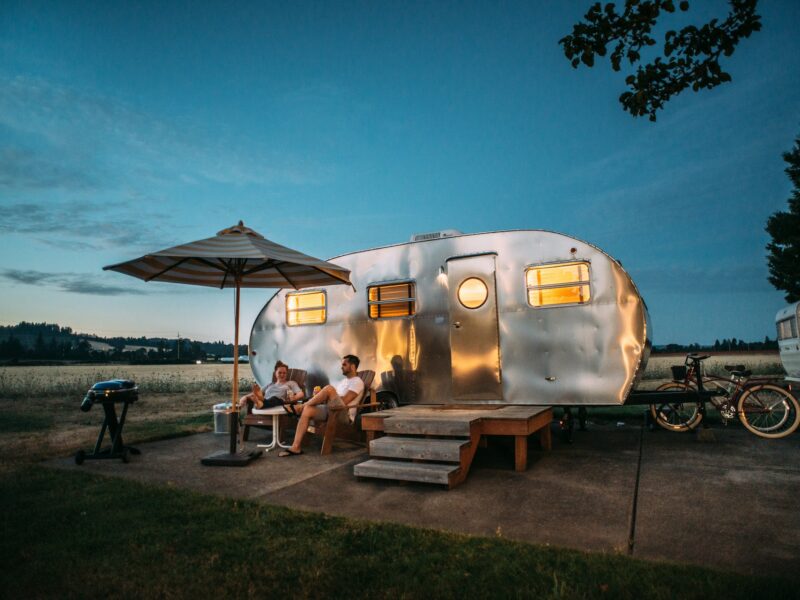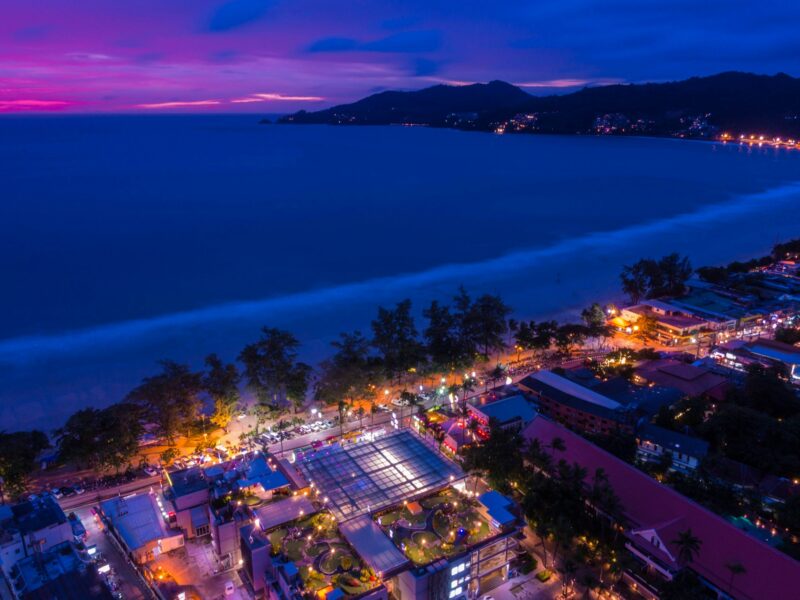Some places are more famous than others but few are known by almost everyone worldwide. People think they know California – the Hollywood glamor, Silicon Valley tech, and endless summer beaches. But that’s just the beginning of what America’s most diverse state has to offer.
The Golden State has a wealth of hidden gems that make it special. Secret beaches, underground art scenes, hidden hot springs, and off-the-beaten-path film locations create experiences that even longtime residents haven’t found yet.
California’s uniqueness extends way beyond the reach and influence of its famous landmarks. These off-the-radar attractions show a different side of the state. Small mountain towns, undiscovered wine regions, and natural wonders rarely appear in tourist guides.
These 12 amazing things about California show what makes this state an endless source of exploration. It doesn’t matter if you’re visiting for the first time or have lived here your whole life – there’s always something new to find.
Contents
- 1 California’s Secret Beaches
- 2 Lesser-Known National Parks
- 3 Hidden Food Valleys
- 4 Underground Art Scenes
- 5 Secret Wine Regions
- 6 Hidden Hot Springs
- 7 Lesser-Known Film Locations
- 8 Secret Mountain Towns
- 9 Hidden Desert Oases
- 10 Underground Music Venues
- 11 Secret Garden Spots
- 12 Hidden Historical Sites
- 13 Good Things About California Frequently Asked Questions
- 13.1 What’s so good about California?
- 13.2 What does California have the best of?
- 13.3 Why is California a good state?
- 13.4 Why is California so valuable?
- 13.5 Is California a good state to live?
- 13.6 Is California a good place?
- 13.7 What is the most interesting thing about California?
- 13.8 Why is California a good place to visit?
California’s Secret Beaches
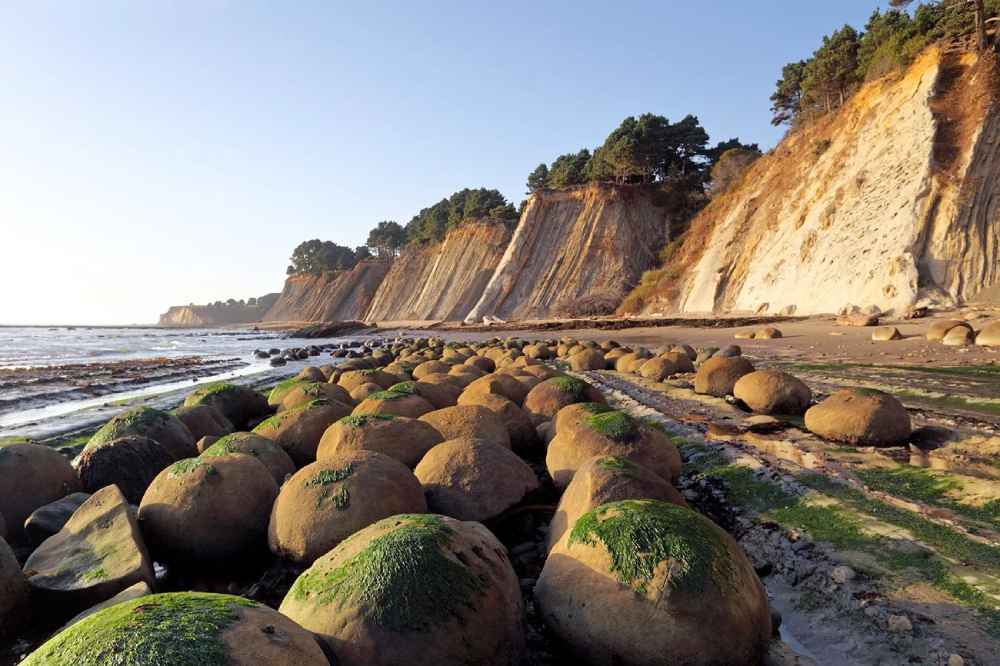
California’s 840-mile coastline hides some of the state’s best-kept secrets – beaches tucked away from tourist crowds. These quiet spots showcase California’s true magic.
Hidden Coastal Gems
Hidden Beach in Klamath sits in Northern California as a secluded paradise you can reach only by hiking through tree-covered hillsides. Down south, Bowling Ball Beach in Mendocino amazes visitors with perfectly spherical stones that natural geological processes created.
The central coast has its own hidden spots. Fort Ord Dunes State Park stretches for four miles with pristine beaches nestled among towering dunes. Sandspit Beach in Morro Bay stands out as a truly remote escape. You’ll need a boat to get there, but its unspoiled dunes and Morro Rock’s spectacular views make it worth the trip.
California’s Secret Beach Activities
These hidden coastal spots let you experience something different from typical beach visits:
- Watch wildlife at Moonstone Beach Boardwalk where sea otters, whales, dolphins, and elephant seals play
- Take photos at Bowling Ball Beach as spherical stones emerge during low tide
- Bring your dog to Esplanade Beach in Pacifica
Best Times to Visit These Beaches
Late fall through early spring works best to explore these hidden spots, except during holidays when crowds show up. The water feels warmest from September to mid-October, and the coastal weather stays pleasant.
Early mornings or late evenings give you the most peaceful experience with fewer people around. The coast’s temperature rarely drops below 68°F, and cool sea breezes keep summer heat in check.
These hidden coastal treasures show what makes California special – knowing how to find peace and natural beauty in one of America’s busiest states. Each secret beach tells its story and lets visitors see California’s coast at its most genuine.
Lesser-Known National Parks
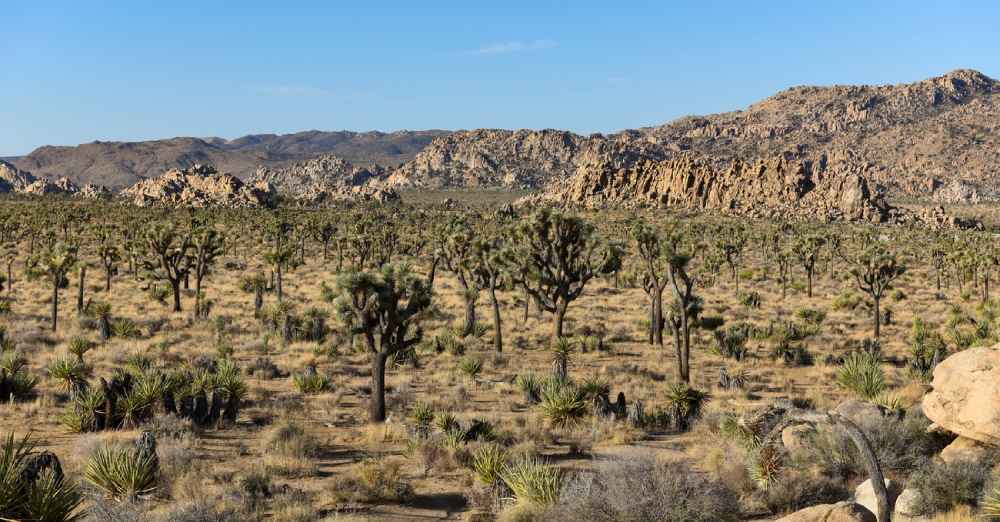
California’s famous national parks attract millions of visitors each year, yet some of its most amazing natural treasures remain hidden in plain sight. These undiscovered parks highlight California’s special character through its rich variety of landscapes and ecosystems.
California’s Hidden National Parks
Pinnacles National Park, California’s newest and smallest national park, covers 26,000 acres in Central California. Visitors can explore distinctive volcanic formations and mysterious caves that reveal the state’s geological history.
Channel Islands National Park, known as ‘the Galapagos of North America,’ protects five remarkable islands off the Southern California coast. The park’s remote location has created unique habitats across its 346 square miles of protected land.
Lassen Volcanic National Park features the world’s largest plug-dome volcano. The park stands out because it displays all four types of volcanoes found on Earth, making it a geological marvel.
California’s National Park Wildlife
These parks protect an incredible range of wildlife:
- Channel Islands shelters hundreds of unique plant and animal species, including the native Island Fox
- Pinnacles provides vital habitat for endangered California condors and Townsend’s big-eared bats
- Lassen supports over 700 flowering plants and 250 vertebrate species
National Park Visitor Tips
The right timing makes a big difference at these hidden gems. Lassen’s attractions become available after early June when snow clearing ends. Channel Islands’ boat transportation naturally limits daily visitors.
These parks showcase California’s unique character. They protect pristine wilderness yet remain available to adventurous visitors who step off the beaten path. Each park tells its own story of California’s natural heritage, from volcanic forces to island development.
Also Read: 15 Good Things About Florida: Sunshine State Secrets
Hidden Food Valleys

California’s culinary scene goes way beyond the reach and influence of its famous restaurants. Secret food valleys hide authentic flavors and cultural traditions. The state’s unique charm comes from blending a variety of food cultures with farm-fresh ingredients.
California’s Secret Food Regions
Little Saigon, tucked between Garden Grove and Westminster, serves what many say is the finest Vietnamese food outside Vietnam. Glendale’s heart beats with Europe’s largest Armenian community outside its borders, making it a powerhouse of authentic Middle Eastern cuisine.
Anderson Valley stands out as California’s most exciting up-and-coming food destination. Visitors can experience the genuine farm-to-table lifestyle that shapes the region’s culinary identity. Santa Ynez Valley creates a picturesque setting for food adventures, featuring distinctive dining spots from western-style Los Alamos to Danish-influenced Solvang.
California’s Local Food Specialties
Each food valley brings unique specialties that mirror its cultural heritage:
- Vietnamese “drinking food” and fresh bánh cuốn in Little Saigon
- Armenian kabobs and Middle Eastern delicacies in Glendale
- Fresh Dungeness crab and local oysters along the Bay Area coast
- Farm-to-table cuisine in Sonoma County’s family-owned establishments
Best Times for Food Tourism
Food tourism numbers show impressive growth, with a projected 16.5% annual increase through 2027. Timing plays a vital role in getting the best food tour experience. Summer through early fall (June to October) gives the best access to fresh produce and special food events. Spring welcomes new seasonal menus with smaller crowds. Winter creates perfect moments for intimate dining experiences and special holiday menus.
These hidden food valleys embody California’s special character. Traditional recipes meet innovative cooking techniques here, and every meal tells a story of cultural heritage and agricultural abundance.
Underground Art Scenes

California’s mainstream art galleries have a vibrant underground art scene that reveals the state’s creative spirit in unexpected ways. Creative havens and hidden artist communities showcase California’s unique artistic identity through unconventional exhibition spaces.
California’s Hidden Art Communities
The underground art scene in San Francisco thrives in unexpected venues like Artists’ Television Access, a non-profit space that celebrates experimental video and performance arts. Los Angeles’s Commonwealth and Council operates from a modest building in Koreatown, which it shares with an acupuncture clinic to showcase emerging local talent.
Bombay Beach in the Salton Sea area has evolved from a partial ghost town into an artistic sanctuary. Artists have bought homes and integrated into the local community, while the annual Bombay Beach Biennale has turned this desert town into a canvas for permanent artwork installations.
California’s Art Festivals
The state boasts remarkable art festivals that celebrate creativity in distinctive settings:
- The Sawdust Art Festival in Laguna Beach features two annual shows – a summer exhibition with over 200 local artists and a winter fantasy that runs five weekends from November to December
- The Beverly Hills Art Show takes place twice yearly in spring and fall, displaying works from 245 artists throughout four blocks of Beverly Gardens Park
California’s Art Viewing Tips
Art enthusiasts seeking authentic experiences should plan their visits carefully. Art Walks have gained popularity as scheduled events. The Carmel Art Walk showcases 14 artist-owned galleries every second Saturday of the month.
These underground art scenes exemplify California’s distinctive character – knowing how to turn unexpected spaces into creative sanctuaries. Artists continue to alter the map of the state’s cultural identity from abandoned buildings to desert communities.
Also Read: 15 Good Things About Texas
Secret Wine Regions
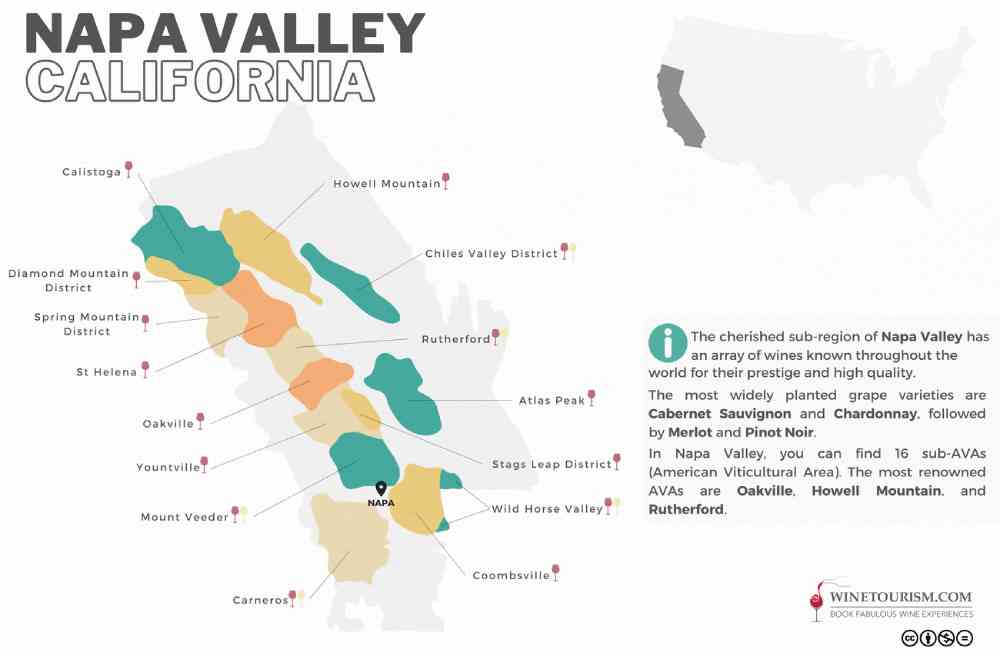
California’s wine country holds more secrets than most people know. Beyond the famous regions lie hidden valleys where passionate vintners create exceptional wines away from the tourist crowds. These lesser-known wine regions showcase California’s special charm and surprise even experienced wine lovers.
California’s Hidden Wine Valleys
San Diego County has deep roots in wine production that stretch back more than 200 years. Father Junipero Serra planted the state’s first wine grape vines here in 1769. The Ramona Valley spreads across 154 square miles and is home to more than 30 wineries. This region earned its American Viticulture Area (AVA) designation in 2006.
The Anderson Valley offers a peaceful landscape where vineyards and apple orchards rest among rolling hills under oak and madrone trees. Local winemakers say it reminds them of Napa Valley from 30 years ago, yet it maintains its own unique character.
California’s Wine Specialties
Each hidden valley creates distinctive wines that reflect their unique terroir:
- Ramona Valley: Primitivo, Sangiovese, and Petite Sirah
- Anderson Valley: Pinot Noir, Gewürztraminer, and cool-climate varietals
- Livermore Valley: Cabernet Sauvignon and heritage blends
The Central Coast Wine Region extends 300 miles along California’s coastline. This expansive area boasts 93,000 acres of vineyards, 275 wineries, and produces over 70 different varietals across 16,000 acres.
Wine Tasting Tips
Winter months from January through early March provide the best intimate tasting experiences. Many family-owned wineries let visitors tour with the winemakers and learn their craft firsthand.
The Ramona Valley Vineyard Association offers detailed maps of local wineries to help visitors explore the area. Livermore Valley stands out as the nation’s only wine region accessible by public transportation (BART).
These hidden valleys embody California’s unique wine heritage. They blend historical significance with state-of-the-art winemaking techniques. Each region tells its story through distinctive wines, from century-old vines to emerging varietals.
Hidden Hot Springs
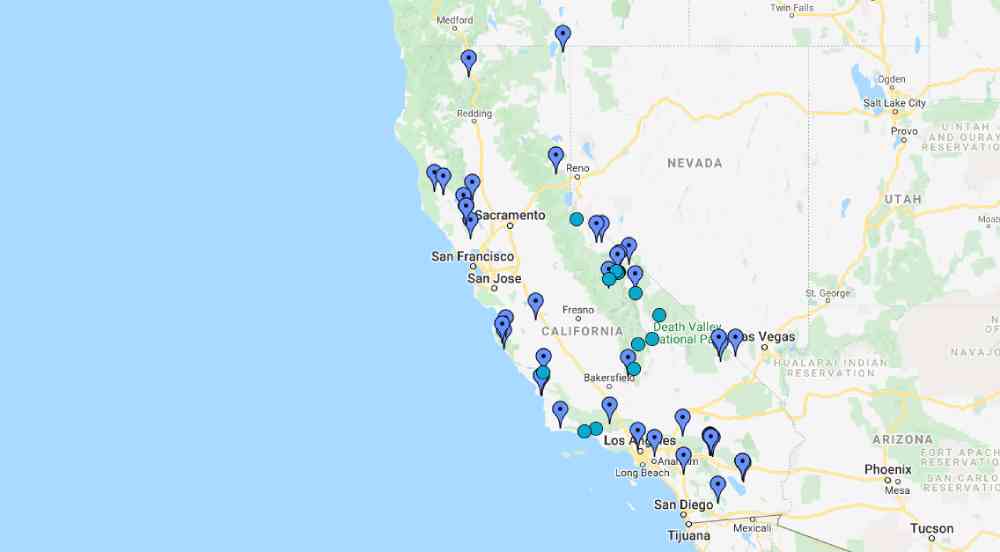
California’s underground network of geothermal wonders reveals the state’s volcanic heritage. These natural hot springs let visitors experience California’s unique feature – its raw geological forces.
California’s Natural Hot Springs
Travertine Hot Springs is proof of nature’s artistry with its cascading pools created by mineral deposits through the years. The springs come with different temperatures and give visitors amazing views of the Sierra Nevada Mountains. The hot springs along Highway 395 near Mammoth Lakes create a peaceful retreat with mountain vistas that take your breath away.
Mercey Hot Springs creates a unique setting in California’s Central Valley. Visitors can relax in geothermally heated waters rich in sodium chloride. The site has outdoor bathtubs that maintain temperatures between 102 and 106 degrees Fahrenheit.
Hot Springs Activities
Natural hot springs are a great way to get different experiences:
- Soak under starlit skies in private outdoor tubs
- Get therapeutic mineral water treatments
- Watch wildlife like owls, hawks, and songbirds
- Capture photos against stunning mountain backdrops
Best Times to Visit Hot Springs
Spring and fall are the best seasons to visit these hot springs with their mild weather and fewer crowds. Each season brings its own magic – spring delights with wildflowers and pleasant temperatures, while fall dazzles with crisp air and vibrant foliage.
Summer guests should plan their soaks early in the morning or late evening to avoid heat and crowds. Winter makes these springs magical retreats where you can soak in warm waters surrounded by snow-capped peaks.
The most peaceful experience happens during weekday mornings when fewer people visit. Several locations stay open for extended hours, and some provide overnight stays for guests who want a deeper connection with nature.
Lesser-Known Film Locations

Away from Hollywood Boulevard’s glamor, California holds movie locations that reveal amazing stories of cinema history. These hidden gems show California’s magic – turning everyday places into unforgettable movie scenes.
California’s Movie History Spots
Lone Pine shows evidence of California’s rich film heritage. The area’s Alabama Hills, Sierra Nevada, and Owens Valley have hosted over 400 feature films since 1920. Hollywood Heritage Museum sits in a historic barn where Cecil B. DeMille created The Squaw Man, Hollywood’s first full-length motion picture.
Colfax, a small town of 2,200 people, has an impressive movie history. Productions from Boy Meets World to Indiana Jones and Kingdom of the Crystal Skull have featured this charming location.
California’s Film Tourism
Movie fans can experience these historic sites today:
- Museum of Western Film History near Alabama Hills displays frontier film memorabilia
- Kansas City Barbecue in San Diego keeps its Top Gun memorabilia and the movie’s original piano
- Hollywood Forever Cemetery hosts Cinespia screenings where cinema legends rest
Film Location Visit Tips
Visitors should skip the busy summer tourist season. Early morning visits provide better photo opportunities with fewer crowds. Many sites offer guided tours. You can ask about private tour options to get a more personal experience.
The Castro Theater, built in 1922, lets visitors step into cinema’s golden age and still hosts major film festivals and premieres. These hidden movie locations capture California’s special character – where Hollywood history meets authentic small-town charm.
Secret Mountain Towns

California’s mountain communities nestle between towering peaks. These hidden towns showcase the state’s special character where adventure blends with small-town charm.
California’s Mountain Communities
Sierra City lies protected by majestic pines and aspens. This hidden gem with just 225 residents sits in the Tahoe National Forest. The stunning Sierra Buttes rise above 8,500 feet behind the town.
Mammoth Lakes stands as one of California’s most unique mountain spots. Visitors love its natural hot springs and world-class skiing. The town’s location helps it keep some of the longest ski seasons nationwide. Ski runs typically stay open from early November through July 4th or beyond.
Mountain Town Activities
These alpine havens let you enjoy year-round adventures that make California special:
- Hike the Sierra Buttes Trail (5.1 miles) to catch panoramic summit views
- Learn about over 80 miles of lift-accessed mountain biking trails at Mammoth Mountain
- Fish in crystal-clear alpine lakes and streams
- Soak in natural hot springs, especially when you have sunrise solitude
Mountain Visit Tips
The right timing creates the best mountain town experiences. September through October brings ideal conditions with fewer crowds and pleasant temperatures. Winter visitors should know that Mammoth Lakes gets much snowfall, making it perfect to enjoy winter sports.
You’ll find unique places to stay, from historic cabins in Arnold to modern lodges in Truckee. The Hampton Inn & Suites in Tahoe-Truckee gives great value with mountain views and easy access to outdoor activities.
These mountain towns show what makes California special – peaceful retreats that blend adventure with authenticity. You can find summer hiking trails or winter powder runs here. Each town keeps its unique character and charm while offering year-round outdoor adventures.
Hidden Desert Oases
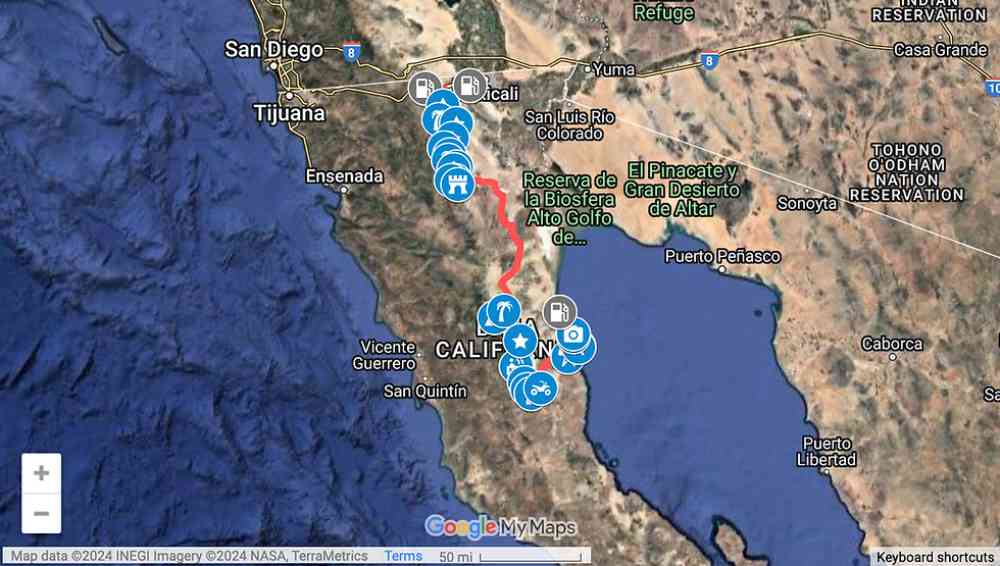
California’s arid landscapes hide amazing sanctuaries that break all expectations. These desert oases show the state’s magic – knowing how to spot life in places you’d least expect it.
California’s Desert Secrets
Death Valley National Park is America’s hottest, driest, and lowest national park, yet it holds breathtaking hidden gems. The Mojave National Preserve shows off its canyons and mesas dotted with Joshua trees. Visitors can hear the strange music of singing sand at Kelso Dunes.
Anza-Borrego State Park, the state’s biggest park, gives you a whole different take on desert life with dramatic badlands and seasonal wildflower shows. Ricardo Breceda’s giant metal sculptures add an artistic touch that reshapes the scene.
Desert Activities
These hidden oases are a chance to see what makes California special:
- Explore the surreal salt flats of Badwater Basin
- Find ancient volcanic craters and hidden palm oases
- Experience stargazing in some of California’s darkest skies
- Photograph the colorful landscape of Artist’s Palette
Desert Visit Tips
The sweet spot to explore these desert treasures runs from November through March when the weather stays mild. You should plan ahead really well for remote areas since many desert spots have limited services.
Your safety depends on carrying plenty of water, especially in summer when temperatures climb. The desert’s delicate ecosystem needs your care – stick to marked trails and follow Leave No Trace principles to keep these special places intact.
Star lovers find pure joy in these remote spots where clear skies create perfect stargazing conditions. Many locations run special programs during astronomical events that add learning to the natural wonder.
Underground Music Venues
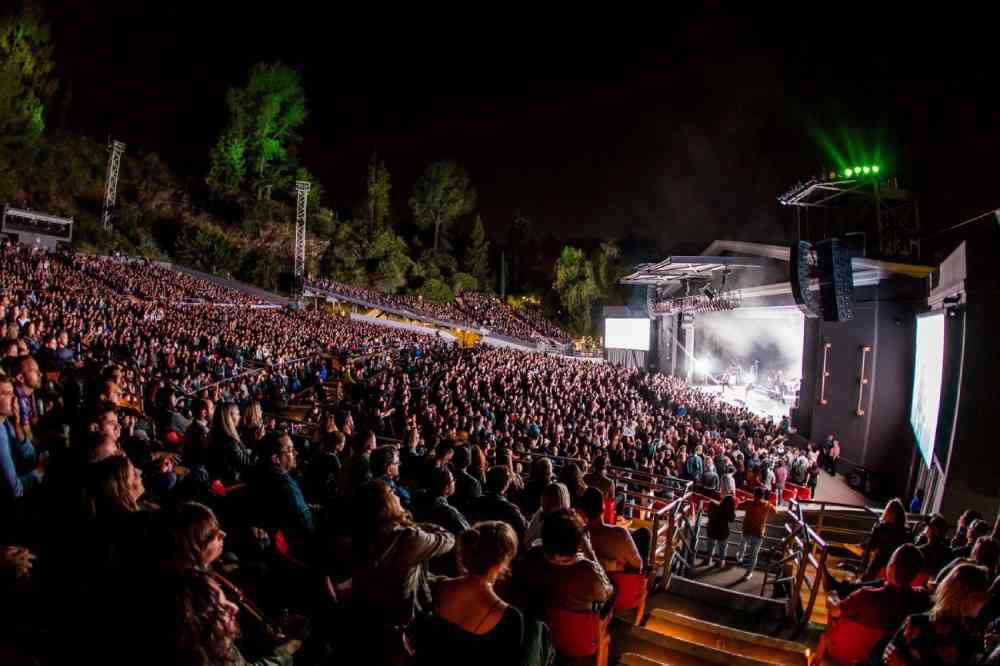
California’s underground music scene runs on unexpected spaces. Historic observatories and converted warehouses showcase the state’s unique cultural identity. These venues create experiences beyond typical concert halls and memories that appeal long after the music stops.
California’s Music Scene
The Mt. Wilson Observatory brings chamber music and jazz concerts to its historic dome. Music lovers can enjoy performances in the same space scientists use to study the stars. These monthly concerts cost $55 and blend science with sound in an unforgettable setting.
Pappy & Harriet’s Pioneertown Palace started as part of a 1870s frontier town movie set and now rocks as a distinctive music venue. Live music fills the air every night they’re open, with indie bands like City and Color and Iron and Wine taking the stage.
California’s Music Festivals
The state’s festival calendar highlights California’s uniqueness with events in a variety of genres and locations:
- CRSSD Festival in San Diego (March 1-2, 2025)
- Beyond Wonderland in San Bernardino (March 28-29, 2025)
- Beachlife Festival in Redondo Beach (May 2-4, 2025)
Music Venue Tips
Timing is vital to get the best experience at underground venues. Many spots share their addresses just hours before events start. The Kuumbwa Jazz Center, 48 years old, is the life-blood of Santa Cruz County’s music scene and provides both performances and educational programs.
Warehouse venues usually lack traditional amenities. These spaces create unique atmospheres, but safety comes first. The scene keeps growing, and venues like The Catalyst welcome both established artists and fresh talent.
California’s music scene excels at turning ordinary spaces into extraordinary venues. Observatory domes and desert saloons each add their character to the state’s rich musical heritage.
Secret Garden Spots
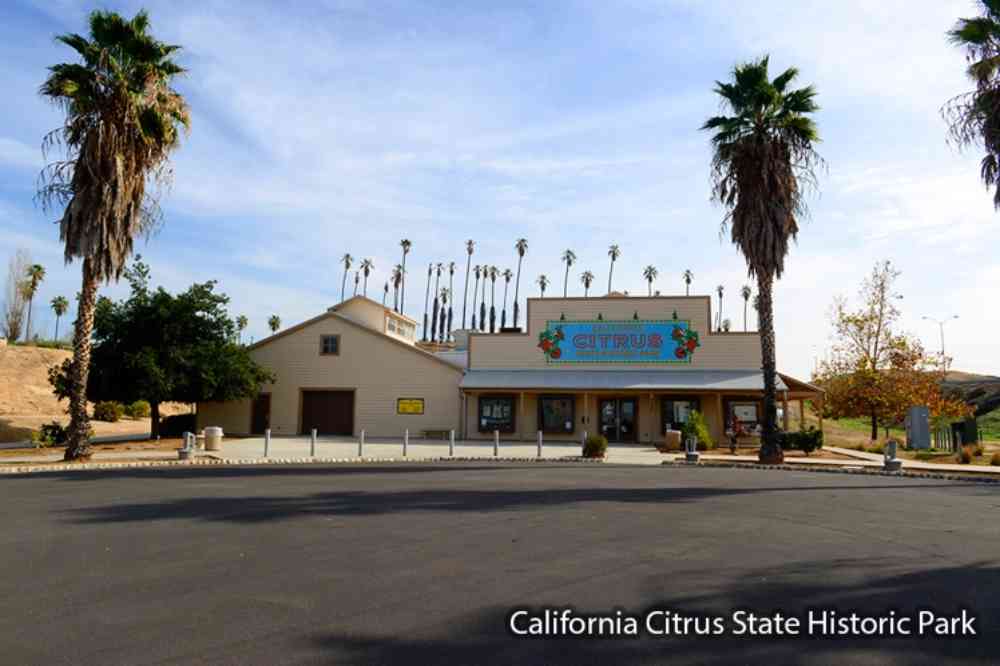
California’s landscape holds secret gardens that serve as peaceful retreats and showcase the state’s horticultural diversity. These hidden botanical gems show what makes California special – knowing how to create serene spaces in urban settings.
California’s Hidden Gardens
Arlington Garden in Pasadena is the city’s only dedicated public garden. It has turned a once-vacant lot into a thriving Mediterranean climate ecosystem. The Gardens of the World lets you take a closer look at different cultural landscapes, from Italian terraces to Australian palm forests, and stays open to the public year-round.
The Japanese Garden in Los Angeles welcomes visitors again with its stunning three-tiered waterfall. This peaceful sanctuary shows California’s cultural diversity at its best. The Moorten Botanical Garden houses over 3,000 desert plants that are grouped by their natural habitats. Visitors can explore this specially curated collection of specimens.
Garden Activities
These hidden sanctuaries give you amazing experiences all year:
- La Jolla’s Secret Garden Tour shows off private gardens and local landscaping artistry seasonally
- The Camellia Forest hosts educational demonstrations and plant shows
- Garden boutiques sell unique handcrafted items and vintage treasures
- Gardens come alive with music and artistic displays
Garden Visit Tips
Each hidden garden shines at different times of the year. Coastal gardens look their best from September through mid-October when the weather is just right. The Allied Arts Guild gardens blend Mediterranean perennials with native plants that burst into color during spring.
Some gardens like the UC Master Gardeners demonstration spaces run weekly maintenance sessions. Expert gardeners love to share their knowledge here. Photography buffs should head to these spots early in the morning for the best light and smaller crowds. The Descanso Gardens expects to welcome more than a million visitors in 2023.
These secret spots capture California’s unique character by blending natural beauty with thoughtful design. Every garden, from desert botanical collections to Japanese-inspired meditation spaces, tells its own story of California’s horticultural heritage.
Hidden Historical Sites
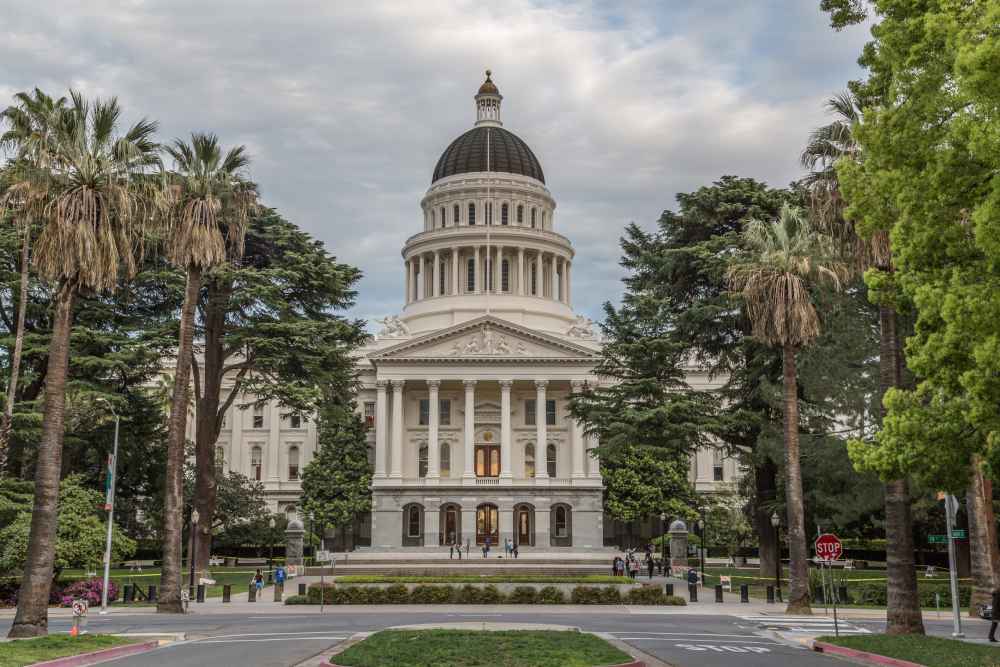
California holds historical treasures that go far beyond its famous landmarks and tourist spots. These hidden gems tell compelling stories of the American West and highlight the state’s unique character.
California’s Secret History
Bodie Ghost Town remains frozen in time and stands as America’s best-preserved ghost town from the California Gold Rush era. This National Historic Landmark has over 100 structures in their original state. The furnishings haven’t been touched since the early 1940s. Sutter Creek, a former mining town that covers just 3 square miles, is home to about 2,000 residents who share their community with history buffs learning about its gold-mining heritage that spans over a century.
The historic Mission Trail features 21 Spanish missions built during the 18th and 19th centuries. Each mission tells unique stories about interactions between European settlers and Native American tribes. These sites now serve as living museums that showcase California’s rich cultural heritage.
Historical Site Activities
California’s rich history comes alive through several experiences:
- The Miners’ Bend Historic Gold Mining Park offers artifacts and photographs from Sutter Creek’s mining era
- Bodie’s historic structures include schoolhouses, churches, barbershops, and jailhouses
- San Luis Obispo Museum of Art and Mission San Luis Obispo de Tolosa are available within a 5-10 minute bike ride
History Tour Tips
Timing is vital when you visit these historical sites. Pasadena alone has over 1,000 buildings listed on the National Register of Historic Places. The historic Route 66, 96 years old, offers one of the best ways to see these historical treasures.
California State Parks works closely with Native American Tribal Nations and community partners. Their programs accurately represent the state’s history. This steadfast dedication to preservation and education shows what makes California special – its ability to maintain authentic connections to its past while embracing modern storytelling methods.
Good Things About California Frequently Asked Questions
What’s so good about California?
California is known for its incredible diversity, offering everything from stunning beaches to majestic mountains and vast deserts. The state boasts a wide variety of natural beauty, a booming economy, and a rich cultural landscape. Whether you’re looking for a laid-back lifestyle, outdoor adventure, or vibrant city life, California has something for everyone.
What does California have the best of?
California is home to some of the best weather in the U.S., with a mild, Mediterranean climate that attracts people from around the world. It also excels in industries like entertainment (Hollywood), technology (Silicon Valley), agriculture, and innovation. Additionally, California is known for its world-class universities, diverse culinary scene, and abundant natural resources.
Why is California a good state?
California is a good state due to its thriving economy, vast job opportunities, and diverse living environments. It is a hub for technology, entertainment, and agriculture, making it an ideal place for people in various industries. The state’s diversity in geography, culture, and lifestyle options allows residents and visitors to experience an unparalleled range of activities and attractions.
Why is California so valuable?
California is valuable due to its significant contribution to the U.S. economy, being the largest state economy in the country. It is a global leader in technology, entertainment, and agriculture, and its high-quality educational institutions attract people worldwide. Additionally, California’s vast natural resources, including agricultural land, minerals, and energy sources, make it an essential state both domestically and internationally.
Is California a good state to live?
California can be a great state to live in, depending on personal preferences and lifestyle. It offers a diverse range of cities, from bustling metropolises like Los Angeles and San Francisco to smaller towns with a more relaxed atmosphere. With excellent job opportunities, high-quality healthcare, and a mild climate, California attracts people from all walks of life, although the cost of living in some areas can be high.
Is California a good place?
Yes, California is considered a great place for many people due to its natural beauty, economic opportunities, and cultural diversity. The state’s unique mix of coastlines, mountains, and urban centers provides a broad range of lifestyles to choose from. Additionally, California’s vibrant arts, entertainment, and food scenes contribute to its appeal as a great place to live, work, and visit.
What is the most interesting thing about California?
One of the most interesting things about California is its cultural and geographical diversity. The state has a wide range of ecosystems, from the beaches of Southern California to the snowy peaks of the Sierra Nevada, and its cultural diversity offers a rich variety of food, music, and traditions. The state is also home to numerous iconic landmarks, like the Golden Gate Bridge, Yosemite National Park, and Silicon Valley, making it a truly unique place.
Why is California a good place to visit?
California is a great place to visit because it offers a wide variety of attractions for all types of travelers. From the iconic beaches and theme parks like Disneyland to the breathtaking national parks such as Yosemite and the Sequoia National Park, California has something for everyone. Visitors can enjoy world-class dining, shopping, and cultural experiences, as well as beautiful weather year-round, making it an ideal vacation destination.

